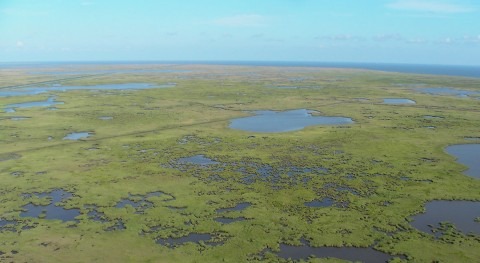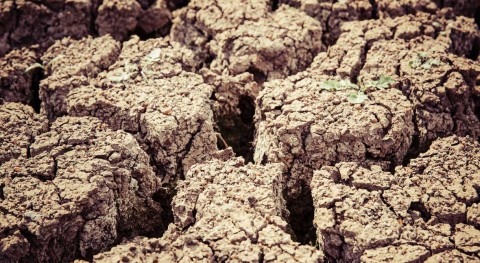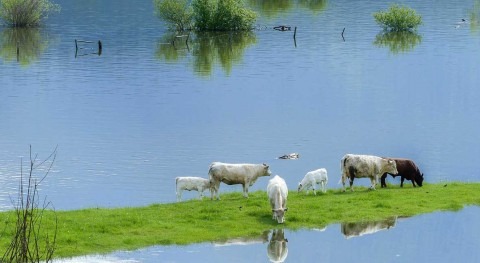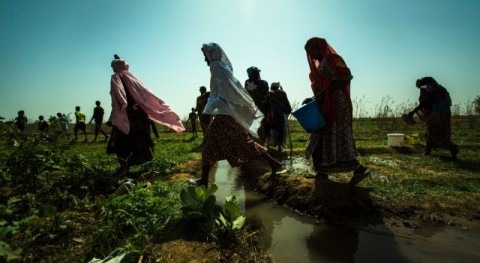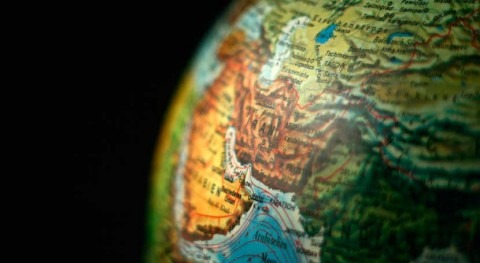In this pandemic-tinged moment, the mere mention of supply chains has the power to induce a shudder in the average consumer. Food, furniture and more have been affected by shortages and supply chain crises. However, for agribusinesses, supply chains are the place to focus as they look to curb their water risks, so they can keep feeding the world sustainably.
Last year’s changing weather patterns have led to a range of examples from droughts in the Southwestern United States and flooding in China to delayed harvest in Europe due to heavy rainfall.
Changing weather patterns and the impact on water resources and growing seasons is an existential problem for businesses, their suppliers and their customers. Agriculture withdrawals account for more than 70% of the fresh water on Earth, even as water demand is projected to exceed supply by 40% due to a changing climate and a growing population. So it makes long-term business sense to tackle water risk through supply chains.
Many agribusinesses already measure and manage water risks, but generally concentrate on risk in their direct operations. Less than half of the largest food sector companies have conducted comprehensive water risk assessments for their agriculture supply chains, and only one in four have targets to reduce water use where their ingredients are sourced, according to a recent Ceres evaluation.
Setting targets for the supply chain can be a daunting process because there may be many suppliers for each food manufacturing or processing facility. However, through strategic prioritization, these targets can help to mitigate risk and prioritize action where it is needed most. And the process to do so may be less complex than you would think. Global datasets and models can help businesses understand risks to their supply chains and set water targets, even if they don't have full traceability of their supply chains. WRI’s new paper, Developing Enterprise Water Targets Informed by Local Contexts: Cargill’s Approach, provides an in-depth look at how Cargill is setting water targets. Additionally, WRI has developed and updated their suite of Aqueduct tools for water risk assessments that allow companies to map supply chains. Combined with global footprint data, this can be enough to determine the strategic priorities in the agricultural supply chain. Read on to learn more about why this makes good business sense.
The Supply Chain Approach to Water Stewardship
This approach has shaped how global agribusiness giant Cargill, a WRI donor, addresses water risk for its suppliers. To reach its goal of creating the world’s most sustainable food supply chains, Cargill worked with WRI to develop the company’s water targets. In 2020, Cargill publicly committed to achieve sustainable water management in its operations and priority watersheds, including restoring 600 billion liters (160 billion gallons) of water and reducing 5 million kilograms (11 million pounds) of water pollutants in priority watersheds, among other water-related targets.
Focusing On Where Change Is Needed Most
While Cargill recognized the importance of change in its agricultural supply chain, the company realized that mitigating risks across the entire supply chain of more than 6,500 watersheds was not feasible. By following guidance from a recent publication, Setting Enterprise Water Targets, WRI and Cargill were able to prioritize locations based on the severity of the water challenge and how relevant the location was to the business. For example, by applying these criteria, Cargill narrowed its focus on water availability to 35 watersheds, while still achieving 74% of the desired change to remain within ecological limits of the watershed across Cargill’s entire enterprise.

Prioritization Filters Used to Create Cargill’s Water Availability Target for Priority Watersheds
Using Available Data and Leveraging Global Datasets
One of the main reasons why companies have focused on their operations is because it is what they know, what they own, and what they can influence. Moving into the supply chain requires moving into the unknown. This challenge can be overcome by starting with what is already understood. As an example, Cargill may not know exactly which fields the corn processed at their facility comes from, but it does know how much is processed. And it knows most likely all of it comes from within two hours’ drive of that facility. In other cases, it may know that sunflower is coming from France but not the exact region in which it is grown.
Global datasets that monitor where crops are grown help to focus further. Tools like Aqueduct Food help to gain insights and allow companies to assess exposure in their supply chains and identify priority watersheds.
Working with Suppliers in Their Local Context
With priority watersheds identified and the targets calculated, the next challenge is how to meet the targets. Again, the local context of each priority watershed is important. Cargill is engaging local stakeholders to find locally relevant and beneficial solutions that reduce water use and water pollutants, while also generating benefits for people and mitigating other resource concerns. In short, local teams address local water challenges in the local context.
The approach that Cargill has taken has led to two strategic benefits:
- Prioritization leads to easier implementation, as these targets align with the water challenges faced. For example, that may mean in one watershed Cargill will work with farmers to adopt soil health best practices. In another watershed, it may mean investing in more efficient irrigation infrastructure.
- A strategic approach to water has many stacked benefits. Water is essential for agriculture, and farmers can’t grow their crops without a healthy ecosystem. Addressing water challenges in the agricultural supply chain can help improve farmer livelihoods, reduce greenhouse gas (GHG) emissions and improve resilience. For example, planting cover crops helps reduce runoff and keeps nutrients in the soil. The improved soil health results in an improved yield and long-term benefit for the farmer. The cover crops also help sequester carbon, and the better soil health reduces the need for fertilizers, which means reduced GHG emissions from fertilizer applications.
Lessons Learned
As more companies look outside their direct operations to account for water impacts and dependencies throughout their supply chains and develop contextual enterprise water targets, we offer a few lessons learned from our approach.
- Businesses’ largest impact on water may be in supply chains, not direct operations. As demonstrated by Cargill’s enterprise water targets almost entirely reflecting the activities in its agricultural supply chain, companies that only focus on direct operations may be missing the mark. This finding underscores the importance of taking a holistic approach to water stewardship
- When it comes to data, don’t let the perfect be the enemy of the good. As companies embark on a supply chain approach to water stewardship, a lack of data and transparency can be discouraging. Global models, published literature and other open-source information can provide useful estimates to facilitate an efficient and scalable risk assessment and target-setting approach across large portfolios. Engagement with local stakeholders, using an uncertainty ratio or margin of error, and/or investing in better local data in some of the highest-priority areas can further strengthen the robustness of the approach over time. Meanwhile, the private sector can support new data and research to fill any knowledge gaps and help to advance the field of corporate water stewardship overall.
- Be adaptable. While there’s useful step-by-step guidance for setting contextual targets across an enterprise, there are many other decisions to be made along the way. For example, there are no global standards for determining desired conditions, and there is a dearth of datasets and tools to support setting water quality targets. Our approach represents a pragmatic path forward using the best available data, best professional judgment and peer review. As more businesses follow a similar path, the more lessons we can learn to advance and adapt water stewardship. Similarly, we anticipate changes in supply chain activities over time, so water targets will continue to evolve. Acknowledging the enormity of an enterprise target-setting exercise and striking a balance between what is technically correct and what is understandable for a broader audience, we recommend reviewing and updating targets every three to five years.
Cargill is one of many enterprises facing water risks. These risks won’t be mitigated if water stewardship strategies are limited to direct operations. While the approach presented was developed to meet Cargill’s specific needs, other companies can learn from and adapt the methods to their own unique scenarios. As water resources continue to be threatened, water targets continue to evolve and more and better data become available, shared learning around best practices in water stewardship will be critical. Through collective action, the private sector can do its fair share to solve water challenges up and down its supply chains.






